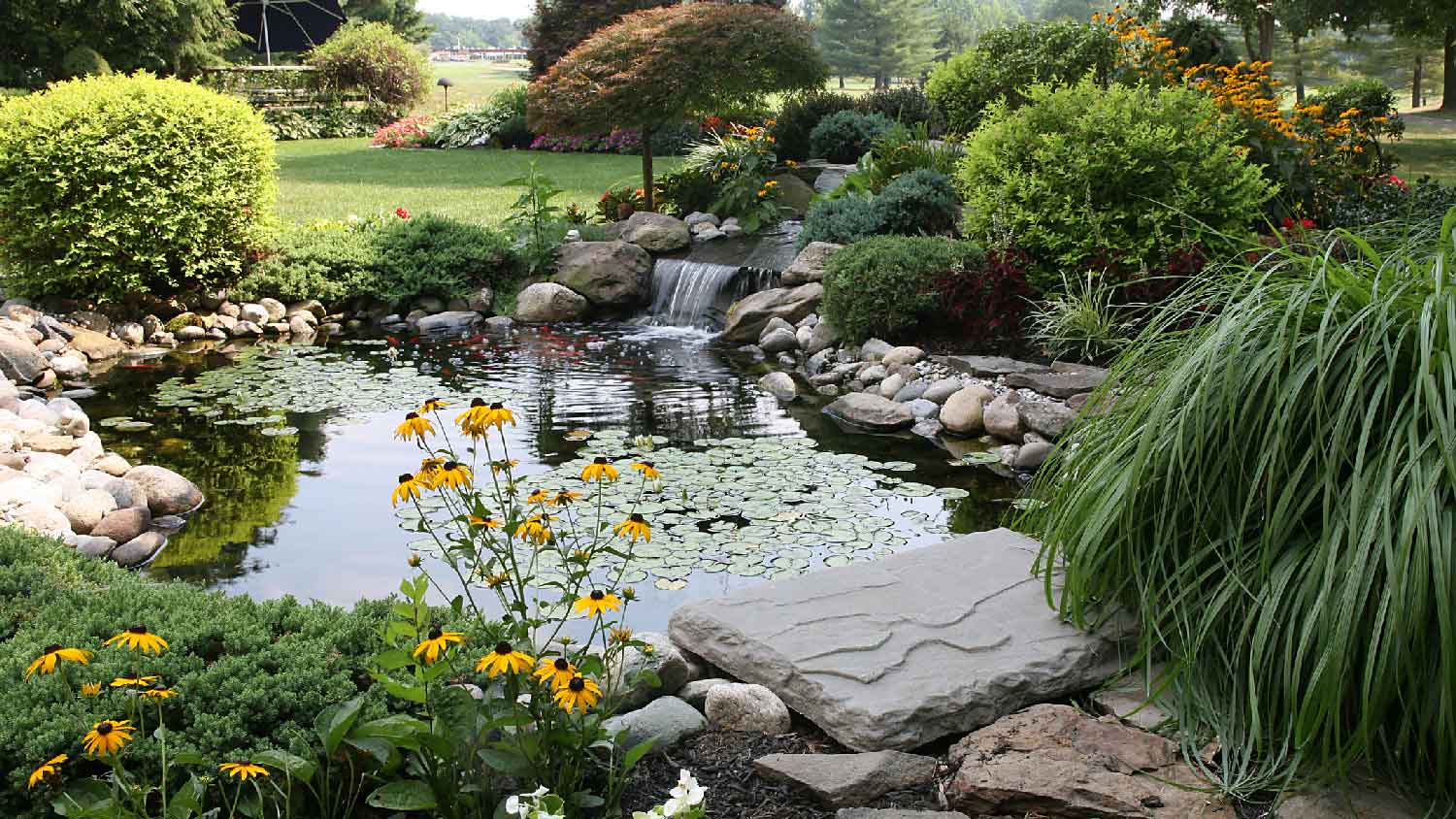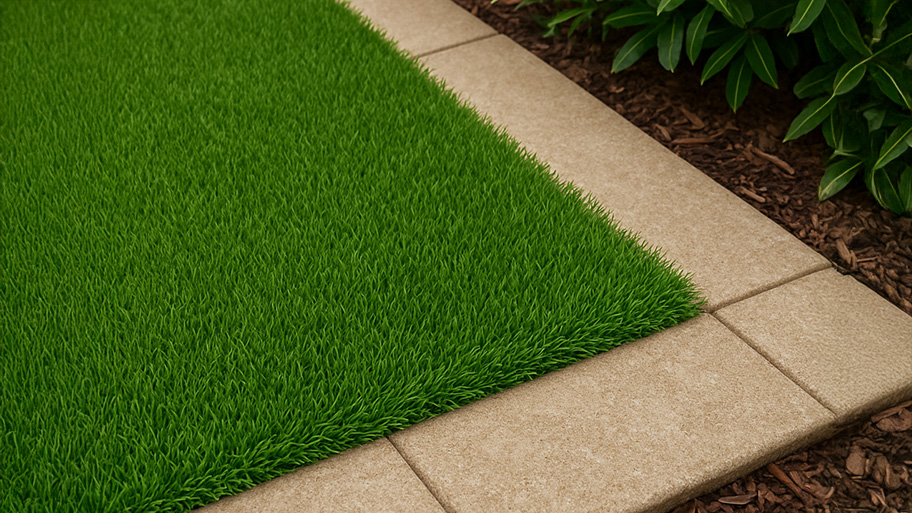
Xeriscape costs depend on materials, the size of your yard, and if you DIY. This guide will help you determine what your xeriscaping project will cost.
Grab your shovel and kick rainwater to the curb


A properly graded yard looks great, but more importantly, it moves water away from your foundation and toward a drain. Learning how to build up soil around the house foundation will help protect your house from rot, pests like carpenter ants, flooding, and other problems. Follow these steps to get the job done right.
Complex, high-risk projects demand more than typical DIY projects. They require time, specialized tools, and trained expertise to make sure the job is done safely and correctly. We made it easy for you to find a local pro—with our skilled network, you'll get the job done without the stress of doing it yourself or significant safety risks.
Before you get started figuring out how to grade around the house, you’ll need to take a few steps to prepare for the project. Any digging in your yard runs the risk of running into utility lines, so for safety’s sake, you’ll want to contact the utility companies to determine where your utility lines are and mark them. You’ll also want to remove any grass and plants from the area that you’ll be regrading and keep them to replant once you’re done.

The first step in improving your yard’s drainage is to determine how the water is flowing. Your yard’s highest point is usually where the water flows from, and the lowest point is where the water pools.
Homeowners can use simple tools such as stakes, string, and a line level to measure their yard’s rise (the vertical distance of the slope) and run (the horizontal distance of the slope). From there, you can calculate your grade. If you find the process confusing, bring in a local landscaper to do it for you.
If your home is built on your yard’s highest point, you have positive grading. Rainwater and melting snow should already move away from your foundation, though you may need to make some adjustments if there are areas of water pooling on your lawn. Adding a French drain is another good fix for this problem.
If your home is built on a lower point of your yard, you have negative grading. There are different degrees of negative grading. Even if your home isn’t on the lowest point, your foundation could still experience issues with water damage, so regrading around the foundation will be necessary.
Positive grading is the ideal situation, but not all slopes are equal. The first 10 feet around your foundation should slope a minimum of 6 inches. To be safe, some contractors prefer a 1-inch decline for every foot away from your house. Very steep grades should be avoided because they can lead to erosion. A retaining wall is one way to deal with this.
Mark the locations of pipe covers and vents as well as your sewer cleanout and water meter so they don’t accidentally get covered up as you move soil around. You can do this yourself by purchasing flags and/or spray paint at a local hardware store.
If there’s a chance a basement window may get covered by soil while you’re regrading around your foundation, purchase a window well. This acts as a wall that keeps dirt away from your window so you can still have a little natural sunlight.
During the regrading process, you’ll be adding soil to areas of your lawn with the goal of improving the slope away from your foundation. You can purchase soil from a local nursery and have it delivered, or you can head to the hardware store to pick up a few bags if that’s all you’ll need. But keep in mind that not all soil is a good candidate for regrading.
The ideal soil is well-draining so it won’t hold water against your foundation and dense so water will divert rather than seep through. Avoid heavy clay soil and airy sandy soil. Instead, opt for a mix of silt and clay soil. Never use mulch, though you can add it after the fact.
Now it’s time to get to work regrading your lawn. The first thing you’ll want to do is safely remove and store any plants you’d like to keep that will be disrupted by the work. Then, if you have negative grading around your foundation, you’ll fill in low areas with soil so the ground slopes away from your house. If you have positive grading, check that it’s sufficient. The goal either way is to have at least a 6-inch decline within the first 10 feet around your foundation.
When adding soil, start by removing a few inches of topsoil. Then, spread a layer of new soil, using a rake to smooth it out to create a gentle slope, and tamp it down using a hand tamper.
Keep in mind that you want 4 to 6 inches of exposed foundation above the soil to prevent flooding. This means you may have to remove soil from higher areas of your yard to get the perfect grade. If the exposed foundation isn’t looking its best, you may want to consider foundation refacing.
What you put on top of the soil you’re grading also impacts the way water moves. Many homeowners like to use river rock. This low-maintenance landscaping idea helps increase drainage and protects your foundation from flooding and erosion.
After you regrade your yard, it’s time to replace the plants in the area. This could involve reseeding the grass or installing sod. You may also need to take a trip to the nursery and purchase some new plants for your garden.
Choose perennial flowers if you don’t want to completely replant your garden each year or hire a local gardener to revamp the space. At this stage, you can add a little mulch or fertilizer as you would normally.
If your yard isn’t properly graded, water can pool on your lawn, which damages grass and attracts mosquitoes. You may also notice water seeping into your foundation, a slab leak, or, in a worst-case scenario, a flooded basement. Grading, which involves adding or removing dirt to create a slight incline, can save your foundation (and the sentimental items you’ve put into basement storage) from water damage.
Regrading around your foundation can be a daunting task, so don’t be afraid to ask for help. If you’re doing the project on your own, you may encounter safety issues, like large boulders and other heavy objects. Even if the task seems straightforward, improperly grading a yard could make your drainage issues worse.
Instead, consider hiring a local landscape grading service. The average cost to level a yard is around $2,000, but you can save money on regrading by working alongside a pro. For instance, have a pro measure your yard and map out the project, then spread the soil on your own.
Mariel Loveland contributed to this piece.
From average costs to expert advice, get all the answers you need to get your job done.

Xeriscape costs depend on materials, the size of your yard, and if you DIY. This guide will help you determine what your xeriscaping project will cost.

Leveling your yard can help with drainage and prevent damage to your home. Learn the cost to level a yard and what factors can affect the price.

Railroad tie retaining wall costs can vary widely, so getting an accurate estimate for your needs is a good idea to set your budget appropriately.

How big is your pond? Knowing how much water your pond can hold will help you choose the right treatments for it and the proper number of aquatic life.

What is a privet hedge and why should you consider it for your backyard? Use this guide to consider the pros and cons along with upkeep and maintenance tips.

Opting for a natural turf alternative may have its perks, but the problems with artificial grass can outweigh the good. Get to know these common issues before installing.